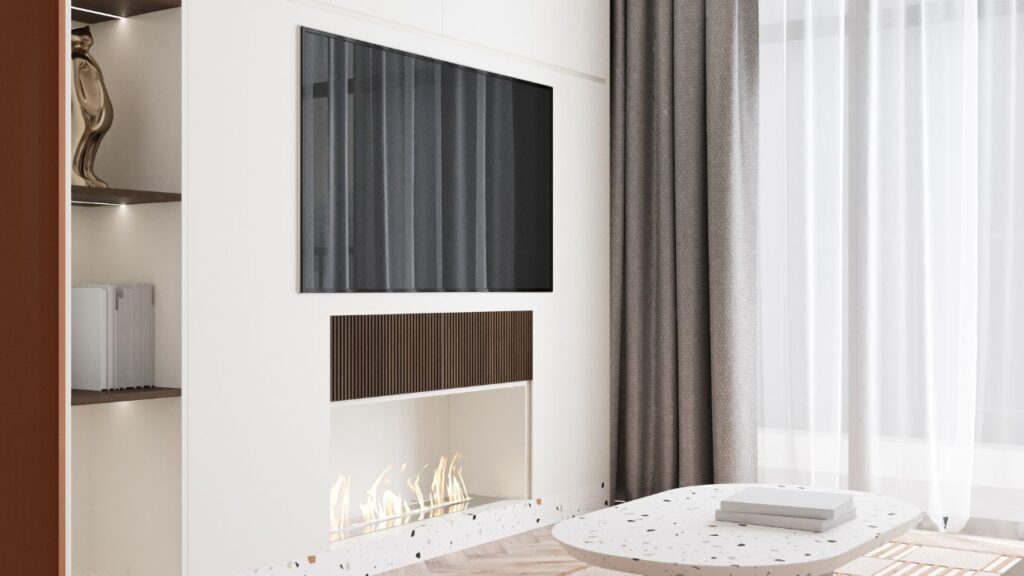In the ever-evolving world of interior design, there is one debate that seems to have no end: should you place your TV in front of a window? While some may argue against it, today we are here to prove them wrong. Welcome to the realm of unconventional spaces, where boundaries are challenged and creativity reigns supreme. In this article, we will explore innovative ways to make TV in front of window setups work seamlessly, transforming what was once considered a design faux pas into an artful and functional centerpiece for any room. So grab your popcorn and get ready to embrace the possibilities as we unravel the secrets behind this daring design choice!
The challenge of TV placement in front of windows.
When it comes to setting up the perfect TV viewing area, one of the biggest challenges many people face is determining the ideal placement in front of windows. While it may seem like a straightforward decision, there are several factors to consider that can greatly impact your viewing experience. Natural light can cause glare on the screen, which can be distracting and make it difficult to see the content clearly. This problem can be exacerbated during certain times of the day when sunlight directly hits the window. To overcome this challenge, you may need to invest in curtains or blinds that effectively block out or filter incoming light.
Alternatively, you could opt for an anti-glare screen protector specifically designed for TVs. Another consideration is how window placement affects overall room lighting and ambiance. Windows that are directly behind or beside the TV can create uneven lighting conditions, causing areas of brightness and darkness in your viewing area. This not only affects your ability to see the screen properly but also detracts from the immersive experience of watching TV. In such cases, rearranging furniture or adding additional lighting sources may help achieve a more balanced environment for optimal TV enjoyment.

Consider natural lighting and glare control
Not only does natural light create a welcoming and uplifting atmosphere, but it also offers various health benefits such as improving mood and boosting vitamin D levels. However, when positioning furniture like a TV in front of windows, glare control becomes crucial. Placing a TV directly in front of a window may seem tempting due to the abundance of natural light available. But before you do so, consider the potential issues with glare. Glare occurs when strong or excessive light reflects off surfaces, creating discomfort for those viewing screens.
This can result in eye strain and reduced visual clarity while watching your favorite show or movie. Hence, it’s important to invest in measures that address glare control effectively. One solution for controlling glare is installing appropriate window coverings such as blinds or curtains that allow you to easily adjust the amount of incoming light. Moreover, placing the TV at an angle perpendicular to the direction of light might also minimize reflections on the screen. Another option is using anti-glare screen protectors specifically designed for TVs and monitors. These protectors reduce reflection and enhance image quality by absorbing excess light rather than reflecting it back toward viewers.
Utilize window treatments to enhance the viewing experience
By utilizing the right window treatments, you can enhance your viewing experience in ways you never thought possible. One key consideration when choosing window treatments for a TV fronted in a window is light control. Glare from sunlight or other bright light sources can significantly diminish image quality and make it difficult to see what’s happening on screen. Opting for blackout curtains or shades can effectively block out unwanted light and provide a more immersive viewing experience with vibrant colors and clear details.
Also, the use of motorized blinds or shades offers a convenient solution for controlling both natural light and privacy while watching TV. With just the touch of a button, you can effortlessly adjust your window treatments to optimize both lighting conditions and outside noise levels. This not only enhances your overall viewing experience but also adds an element of convenience that traditional manual blinds cannot match. By considering these aspects when selecting window treatments, you can transform your living room into a dedicated home theater-like space where uninterrupted movie nights become the norm. So why settle for a subpar viewing experience? Upgrade your windows with suitable treatments that take into account factors like light control, privacy settings, and comfort – all key elements to enjoying movies as they were meant to be seen – up close and personal!
Strategic furniture arrangement for optimal viewing angles
One of the biggest challenges when it comes to furniture arrangement is finding the optimal viewing angle for your TV. A common mistake many people make is placing their television directly in front of a window. While this may seem like a convenient spot, it can actually lead to poor picture quality due to glare and reflections from incoming light. To avoid this issue, consider positioning your TV on a wall adjacent to the window instead.
This will minimize the amount of direct sunlight hitting the screen and improve your viewing experience. Another strategic furniture arrangement tip for optimal viewing angles is to ensure that all seating in your living room has a clear line of sight to the television. This might involve rearranging chairs or sofas into different configurations, but it can greatly enhance everyone’s enjoyment while watching movies or sports games together. Additionally, consider investing in swivel or adjustable mounts for your TV, so you have the flexibility to adjust its position based on where you are sitting. This way, no matter where you are seated in the room, you’ll always have an unobstructed view of the action happening on screen.
Use technology to combat glare and reflections
One of the common problems faced by many individuals is the struggle to watch television when it is placed in front of a window. The strong glare and reflections from sunlight can make it nearly impossible to enjoy your favorite shows or movies. Thankfully, technology has come to our rescue in combating these frustrating issues. One solution is opting for anti-glare screen protectors for your TV. Another innovative way to combat glare and reflections is through the use of polarizing filters.
These specialized filters can be applied directly on the window glass that obstructs the TV’s view, cutting down on unpleasant glares caused by sunlight bouncing off nearby surfaces such as vehicles or buildings. Polarizing filters work by selectively absorbing light waves traveling at certain angles, effectively reducing intense reflections and improving visibility without compromising natural lighting in the room.
Creative solutions for hiding or disguising the TV
One creative solution for hiding or disguising your TV is to incorporate it into a window front. If you have a large window that faces the street, placing your TV in front of it can help camouflage the screen and make it look like an ordinary window from the outside. You can achieve this effect by utilizing specially designed one-way mirror film or smart glass technology.Another innovative approach to hiding your TV is by transforming it into an art piece. There are various options available on the market that allow you to display artwork on your television when not in use.
These devices come with an extensive collection of paintings, photographs, and even customized designs that seamlessly blend with your home decor. This creative solution not only conceals your TV but also adds aesthetic value to your living space while offering versatility in choosing different artworks to suit every mood and occasion. By thinking outside of conventional methods, you can elevate both functionality and aesthetics in disguising or hiding your TV. Whether incorporating it into a window front or turning it into a captivating piece of art when switched off, these solutions offer fresh insights on how to seamlessly integrate technology into our homes while maintaining a visually appealing environment. So why settle for an unsightly black screen when you can explore these exciting possibilities?
Conclusion
In conclusion, making TV in front of a window work is certainly possible with the right approach. By considering factors such as lighting, glares, and viewing angles, it is feasible to create an enjoyable and functional entertainment setup in an unconventional space. Utilizing window treatments like curtains or blinds can help control the amount of natural light that enters the room and minimize any potential glares on the TV screen. Also, experimenting with different seating arrangements and adjusting the TV position can greatly improve viewing angles and overall comfort. With some careful planning and thoughtful adjustments, watching TV in front of a window can become a seamless experience. So go ahead, embrace your unique space and enjoy your favorite shows without compromise!












Commented Posts